Last Updated on September 16, 2024 by Masha Eretnova
Many typical oil and acrylic painting techniques can be easily incorporated into abstract artwork, but there are a few that will most likely be used by abstract artists.
The beauty of abstract painting techniques is that every abstract painter is free to merge them and create new how-to while building a unique style.
I used many of these abstract techniques for the abstract art I made for sale and exhibitions in the last 3 years and in this article, I will share them all along with international artists’s techniques, and you’re more than welcome to play around and come up with your own.
Disclaimer: all techniques can be adapted for acrylic or oil paint or any other medium you work with!
Table of Contents
Read also: 73 Acrylic Painting Techniques For Beginners to Paint like a Pro
This article contains affiliate links. It means no extra cost for you but a little commission (2-3%) for me to support my hobby and blog. Thank you!
5 Elements of abstract art
For me, there are 5 main elements of abstract art you need to think of in your painting.
- Texture
- Shapes & Forms & Lines
- Color
- Composition
- Layers (depth)
Faux Printing
There is probably a real term for that but I call it faux printing.
You don’t need any printing tools.
Simply squeeze the paint on a piece of paper/cardboard/any flat surface you can move around.
It can be just a blob or a real shape.
And then you simply stack it onto the canvas and then pull it. It leaves an interesting texture.
It can be layered, like in this painting:
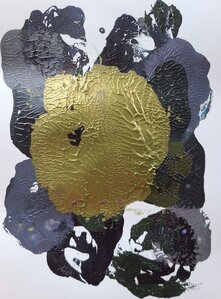
Palette knife painting
I love using palette knives for abstract art.
The beauty is that there are a dozen of different types palette knives which means you can have various applications and effects.
The side of the palette knife can be used to make thin straight lines.
Any art store had them and even cheap ones work just fine!
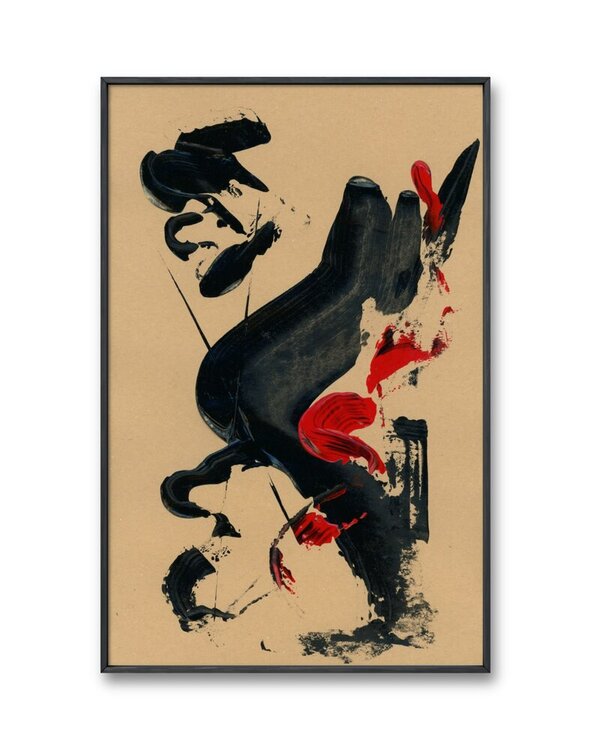
Using Fluid Paint
You can use fluid paint to make “traditional” acrylic pouring, which itself has a handful of techniques, OR you can experiment with pouring paint in your own way.
Like I did in one of my series on watercolor paper: I used pouring paint to make shapes and figures.
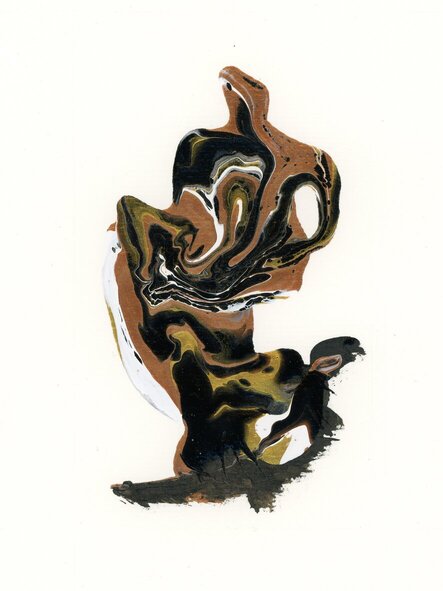
Mixed Media
In mixed media abstract art we use many different mediums, not just one paint.
You can add to your painting:
- oil pastels
- colored pencils
- charcoal
- epoxy
- paint markers
- ink
The key to success is to know what medium can be applied in what order. For ex., you can’t apply acrylic paint over oils.
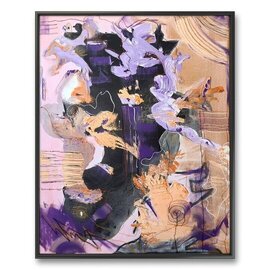
Textured Art
Using acrylic paint you can work with the impasto technique – thick, 3D, textured application of the paint.
Or, you can also use tools – from household items like toothbrushes or sponges to pro tools like Catalyst Wedges in all their diversity.
You can add extra texture and thickness to acrylics.
I use modeling pastes, but you can make one at home.


Dry Brushing
dry brushing is a very easy abstract acrylic painting technique.
You simply choose a brush and dip it into the paint.
You can have a set idea in your head or follow your feelings and, and move it over the canvas/paper.
The stroke you will get will be dense and thick at the beginning and very light and textured by the end of the stroke.
Splatter & Drip Technique
Have you seen revolutionary paintings by Jackson Pollock?
That is a fine example of an abstract painting technique that uses splatter and drips of paint.
Items you can use to drip/splatter the paint: toothbrushes, regular paintbrushes, pipettes, hands, hanging paint buckets with a hole, etc.
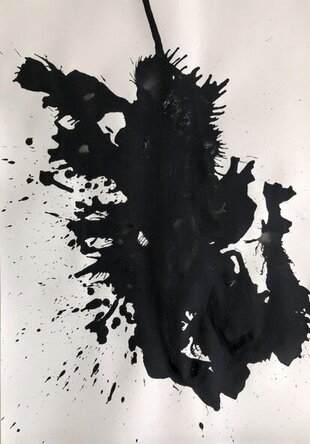
Experimenting with tools and household items
Experimenting with unconventional tools and household items like bubble wrap, Q-tips, aluminum foil, plastic wrap, sponges, rollers, spray bottles, DIY brushes paints, etc.
Where to learn abstract painting techniques as a beginner?
The easiest and most satisfying way to explore abstract techniques is to be unafraid to experiment and break the academic painting rules.
But if you don’t want to waste too much paint or prefer to follow the lead of a pro there are a few good free and paid resources:
- ARIE community
- Youtube
- Skillshare abstract art classes
Easy abstract painting ideas to try:
- 60 Cool and Easy Black and White Painting Ideas
- 54 Awesome Black Canvas Painting Ideas You’ll Want to Replicate

Masha Eretnova, born in 1991, is a Buenos Aires-based certified teacher, artist, and member of the Professional Artist Association with 20+ years of personal painting journey.
She started painting and drawing very early and is now an international abstract artist and educator passionate about acrylic painting, gouache, and crafts.
Her works are part of international exhibitions and contests, including ArtlyMix (Brazil), Al-Tiba 9 (Spain), Exhibizone (Canada), Italy, and many more.
Besides her artistic pursuits, Masha holds a post-grad diploma in Teaching Film Photography and 2 music school diplomas: piano and opera singing.